The shortcuts expert use to a better-looking lawn - and the secrets you need to know to get there
Understanding these technical lawn care terms is the secret to luscious, healthy grass

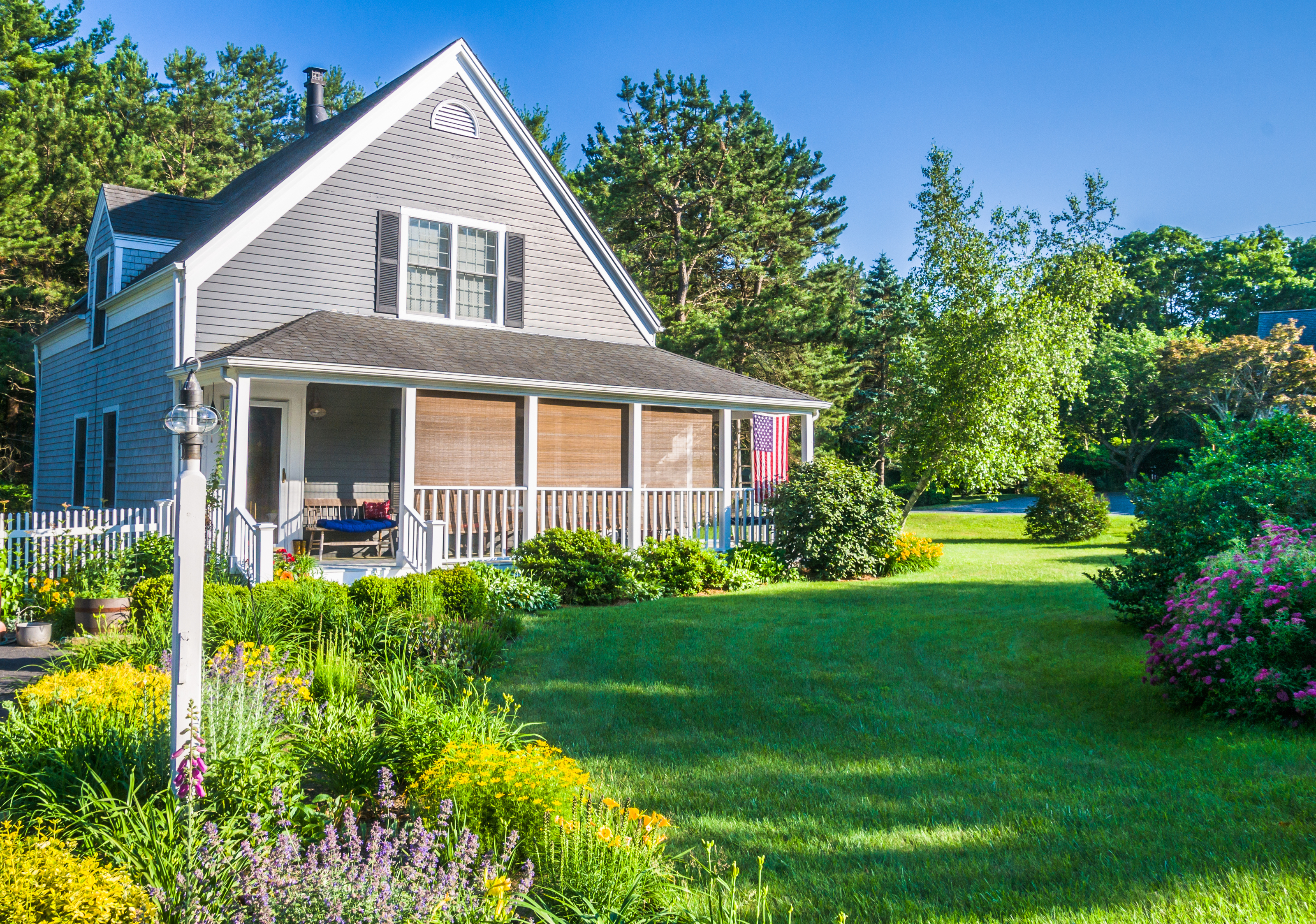
You should consider yourself lucky if you have a lawn but you'll have to be prepared to care for it, and doing so could be more of a challenge than you think. That's because looking after your grass is one thing, but understanding the technical lawn care jargon is another, and while wrapping your head around these terms may feel like a minefield, you can't let it put you off lawn care completely.
Scarify, aerate, de-thatch - all these terms are bound to be unfamiliar to the average Joe. Unless you're a seasoned landscaper or a long-time lawn owner, it's easy to be put off by the complex gardening vernacular but, if you want a luscious and healthy lawn, you can't shy away from them. Familiarizing yourself with these terms could be the difference between prosperous green grass and a yellow patchy yard.
With summer in full swing, there was never a better time to learn the basics of lawn care. To set you on your way, we've asked some experts which key terms you ought to know and put them all together in this handy lawn jargon glossary. Here are 11 definitions to get to know today for landscaping so luscious it will make your neighbors green with envy.
1. Aerate
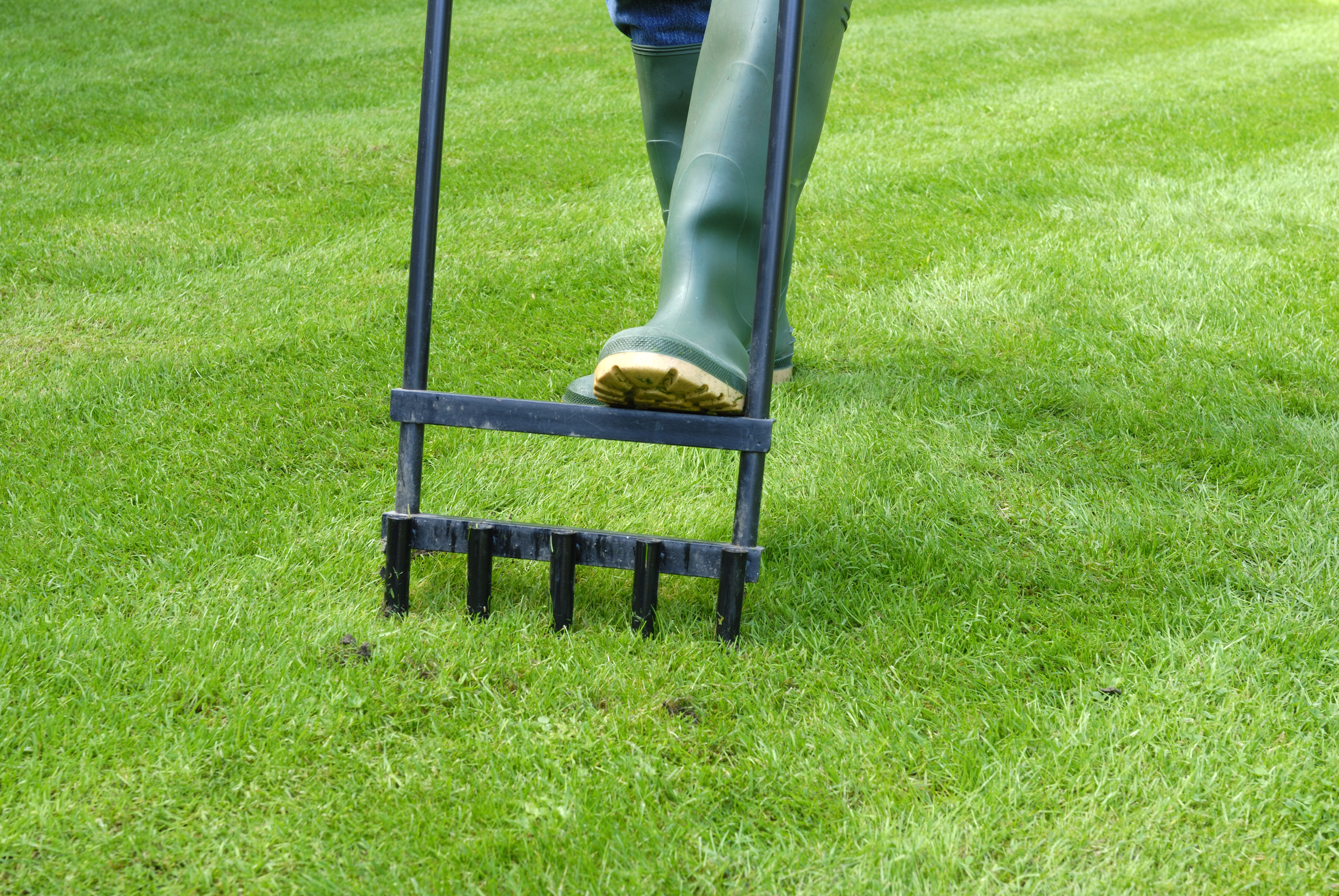
Starting alphabetically, the first term you need to know about is aeration. 'This process involves using a special tool or machine to punch the holes in the ground,' explains Ryan Farley, lawn expert and CEO of Lawn Starter. This aerator on Amazon will do the trick and is very inexpensive. 'This will allow air, water, and nutrients to circulate more freely in the soil, helping the grass plants to grow effectively. It's best done once a year, especially on high-traffic surfaces that might get packed down.'
For cool-season grasses, it's best to aerate your lawn in early fall, so you probably won't need to worry about this task for a few months. It will take a while to notice the results, but come spring your backyard will thank you for it. 'It will also help the roots of your grass grow deeply, producing a stronger, more vigorous lawn,' adds Tony O'Neill, professional gardener at Simplify Gardening.
2. Broadleaf Control
Broadleaf control concerns larger imposter plants in your lawn that aren't your slender blades of grass. Common broadleaf weeds include ragweed, pokeweed, and buckhorn plantain, and controlling them involves their targeted removal from your lawn. 'This can be achieved through manual removal or the application of specific broadleaf herbicides [like this solution on Amazon] to maintain a healthy, weed-free lawn,' says Tony.
For a more organic approach to weed control, you could try a different groundcover as an alternative to grass instead, such as a clover lawn.
The Livingetc newsletters are your inside source for what’s shaping interiors now - and what’s next. Discover trend forecasts, smart style ideas, and curated shopping inspiration that brings design to life. Subscribe today and stay ahead of the curve.
3. De-thatch
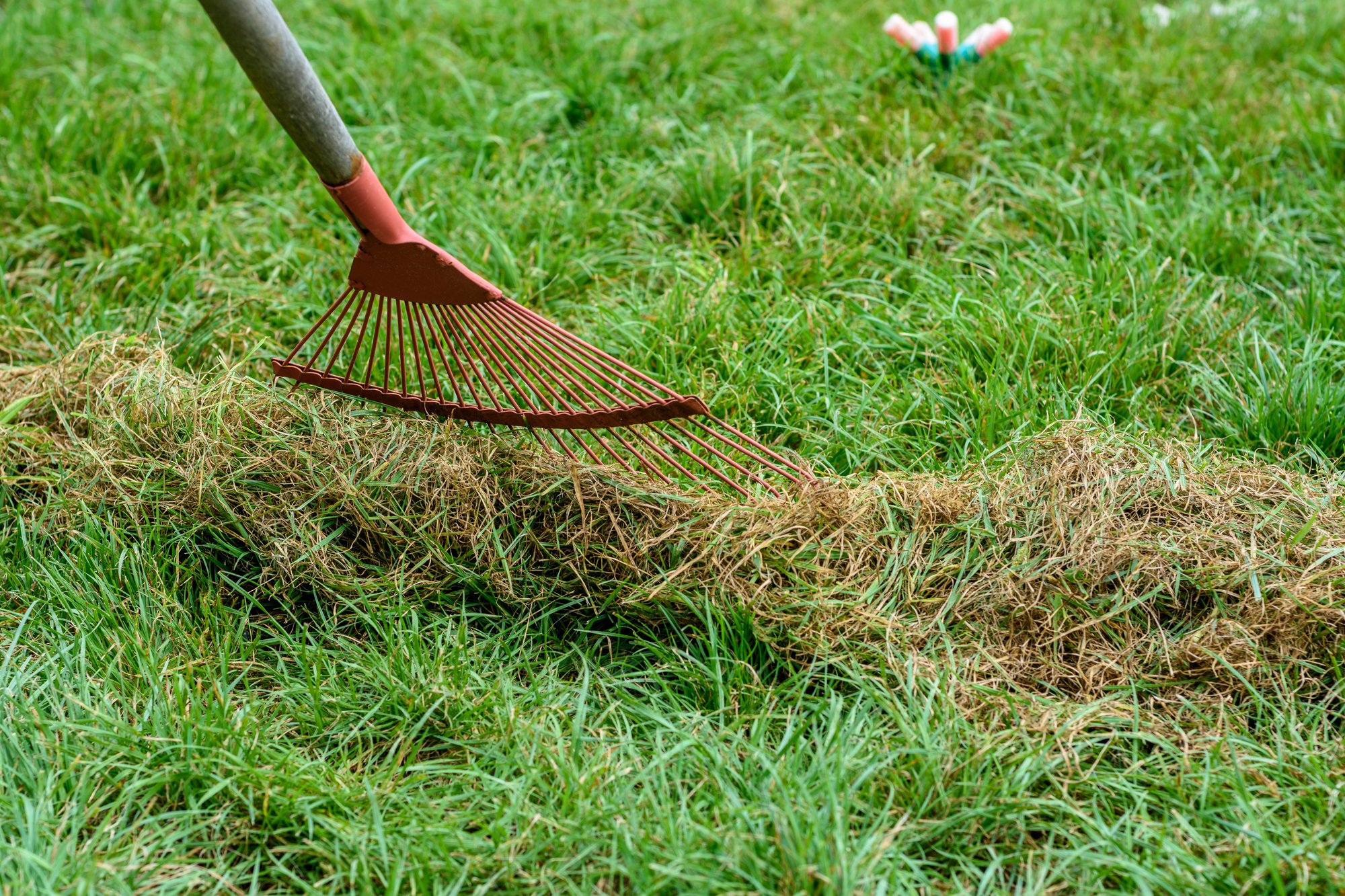
Similar to the way the term thatching is used in the context of roofing, thatching in your lawn is just a matted layer of organic matter that accumulates around the base of your grass. 'De-thatching is about removing that layer of organic matter at ground level in order to provide space for your grass to spread out and create a lush, even layer,' Ryan explains.
The easiest way to de-thatch a small garden lawn is with a regular garden rake, although you could use a de-thatching machine such as this one, from Amazon. 'De-thatching will also improve water and nutrient movement into the soil and encourages new growth,' adds Tony.
4. Fertilize
Just as some plants need regular fertilizing, your lawn will benefit from an occasional feed, too. 'Adding nutrient-rich substances (fertilizers) to your lawn will promote healthy growth,' Tony says. 'The three main nutrients found in fertilizers are nitrogen, phosphorus, and potassium, each serving a specific purpose for the health of the grass.'
A potassium-based fertilizer like this one Amazon is a good way to keep your lawn healthy during winter, but make sure you do your research to understand which type is best for your lawn and when to apply it.
5. Irrigation
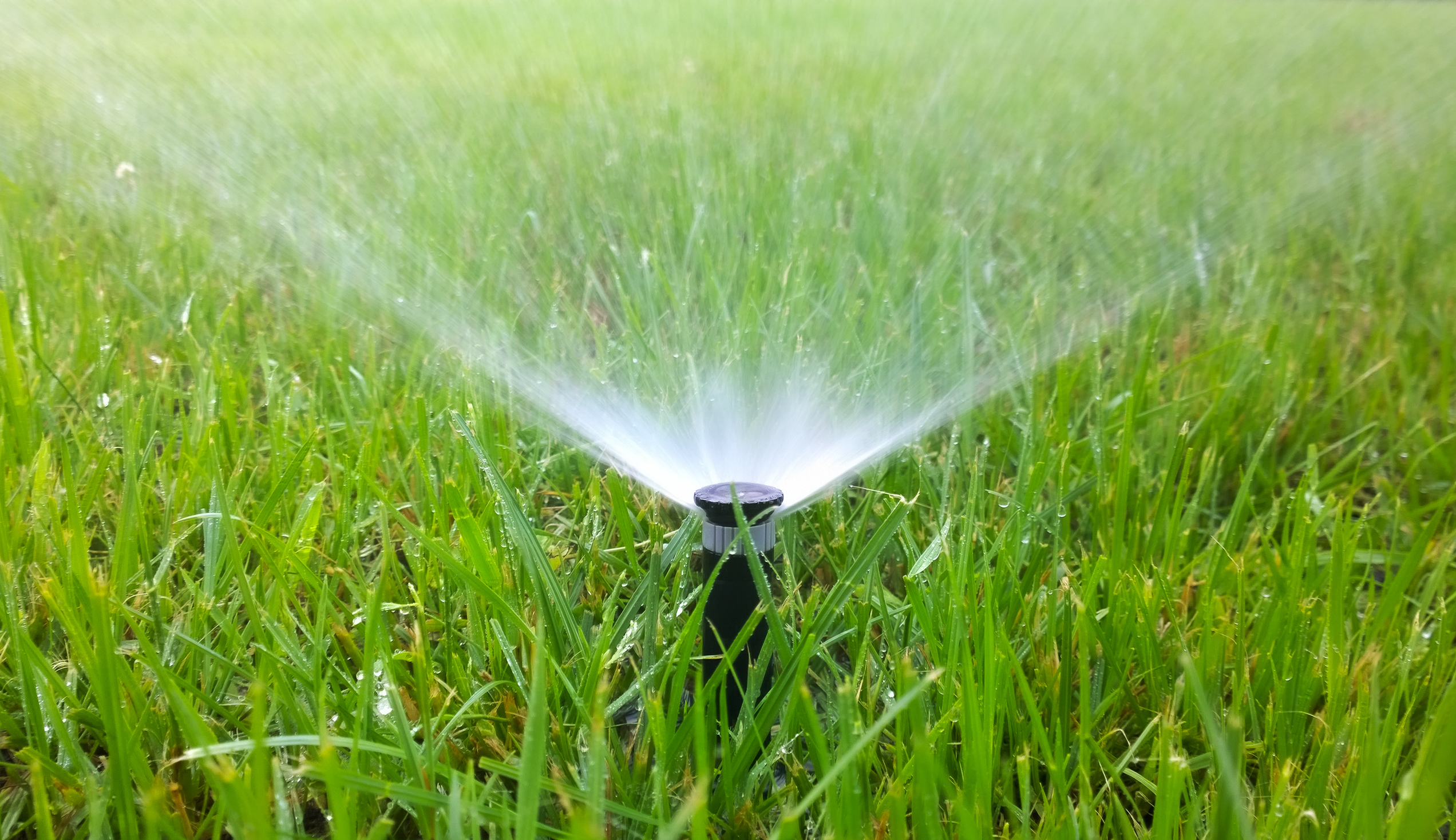
Wondering if you should water your lawn? The short answer is yes, especially during summer. Irrigation is just a fancy term for watering, and the best way to give your lawn a drink is with a sprinkler system. 'The amount and frequency of watering, however, will depend on the type of grass and the climate in which you live,' notes Tony.
6. Liming
'Liming is the process of raising a lawn’s soil pH level when it is too acidic,' explains Jeremy Yamaguchi, lawn care expert and founder of Lawn Love. 'The process of liming generally requires you to first dethatch and then aerate, followed by applying lime (pelletized or liquid) to the lawn and then watering it.' This lime for lawns on Amazon is ideal.
If your lawn is too acidic, it's likely your grass is looking yellow and limp, with patchy spots in places. As Tony notes: 'In such cases, liming your lawn can improve the availability of essential nutrients and enhance grass growth.' You probably don't need to worry about liming your grass in the heat of summer, but it's a good gardening task to do before winter creeps up on us.
7. Overseed

Overseeding is a technique used to fix patchy and lackluster lawns. As the name suggests, it simply involves sowing new seeds over an existing lawn for denser growth. 'The process is used to improve your lawn's density or introduce a more resilient species of grass,' says Tony. 'This is often done in combination with aeration or scarification.'
8. Scarify
On that note, onto sacrification. Similar to de-thatching, scarifying is a process by which you remove moss and decayed organic matter from your lawn, a way to keep your lawn looking healthier in hot weather. The difference is that scarifying is a far more aggressive method that cuts deeper into the lawn, requiring a scarifying tool or electric machine.
'When this material builds up, it can suffocate the roots of your grass and lead to fewer, stalkier stems instead of a nice, even lawn,' Ryan says. 'It's especially necessary if you mulch your lawn instead of bagging your clippings, though mulching still has plenty of benefits as long as you clear out the excess occasionally.'
9. Thatch

This one shouldn't need too much explaining since we already covered de-thatching. 'In short, thatch is a layer of organic debris between the soil surface and the grass blades which can build up and become mat-like,' Jeremy notes. 'This dense cover can hinder essential elements (like water, air, and nutrients) from penetrating into the soil of your lawn.'
10. Top Dressing
'Top dressing involves adding a thin layer of material, such as compost or sand, over your lawn,' explains Tony. 'It can improve soil quality and drainage, reduce lawn stresses, and fill small depressions.' This task is best done during the growing season when your grass is actively growing, typically during late spring and early summer. Why not give it a try next year instead of no-mow May?
11. Verticutting
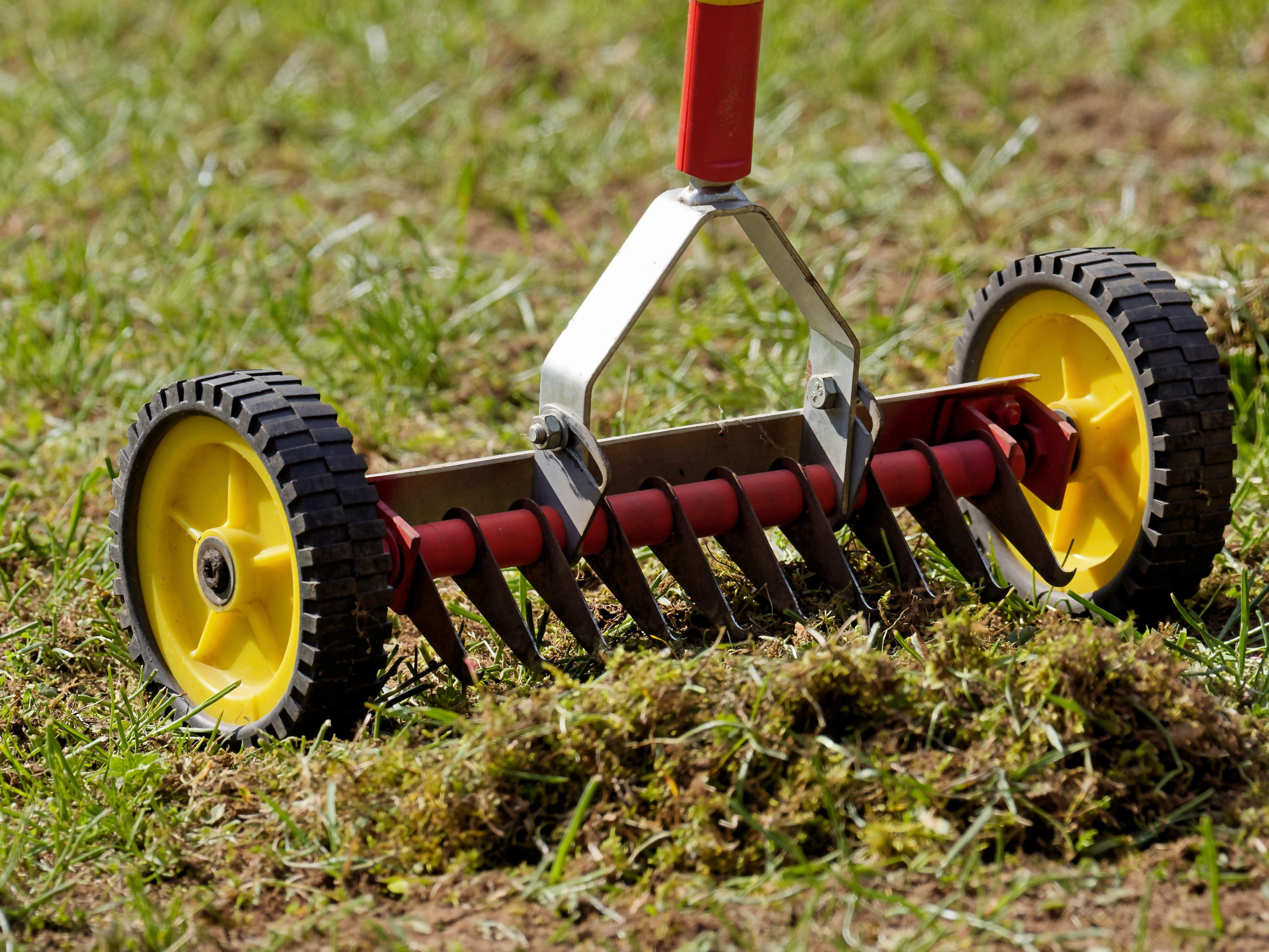
Finally, verticutting is essentially another form of scarification, but an even more aggressive method. 'This is where blades cut into the turf, chopping up the thatch and opening up the surface of the lawn,' says Tony. 'It can help to rejuvenate tired lawns by encouraging them to produce new shoots.'
Give your grass a health kick with these lawn care buys

Lilith Hudson is a freelance writer and regular contributor to Livingetc. She holds an MA in Magazine Journalism from City, University of London, and has written for various titles including Homes & Gardens, House Beautiful, Advnture, the Saturday Times Magazine, Evening Standard, DJ Mag, Metro, and The Simple Things Magazine.
Prior to going freelance, Lilith was the News and Trends Editor at Livingetc. It was a role that helped her develop a keen eye for spotting all the latest micro-trends, interior hacks, and viral decor must-haves you need in your home. With a constant ear to the ground on the design scene, she's ahead of the curve when it comes to the latest color that's sweeping interiors or the hot new style to decorate our homes.


